Macro Calculator
This free, easy-to-use macro calculator gives you your optimal macronutrients and calories. It’s a weight loss or muscle gain calculator for both women and men.
Combine with macro counting or flexible dieting to reach your goals faster.
How to get leaner and stronger?
Our comprehensive macro-based fat loss program shows you how. Learn more
How do macros work?
The foods we eat are made up of three macros (macronutrients). These are carbohydrates (carbs), protein, and fat.
Chicken is high in protein but has no carbs; rice is high in carbs but has very little fat or protein. The three macronutrients provide the body with energy and raw materials for growth and repair.
By calculating the appropriate daily calorie amount for you, we can then break this down into the best macronutrient ratios to achieve weight loss.
Basic steps for macro counting
- Enter details into the calculator
Make sure to choose the correct goal. - Take note of your calories and macros
These will be the targets you are aiming for each day. - Track your macros
Use an app or pre-plan your meals. - Measure results
Don’t use basic weight scales.
Use proper body composition scales (we recommend Renpho) to measure fat and muscle mass changes.
What is a good macro ratio for fat loss or muscle gain?
Your macros should be based on your Total Daily Energy Expenditure (TDEE) and goals.
The calculator defaults to the best macro ratio proven to work for most people.
This ratio is:
- 30% fat
- Protein is 0.65 grams per pound of body weight,
- The remainder is carbs.
Depending on your goal, this will be either a calorie deficit or a surplus.
You can go further and make more adjustments: Perhaps you’re an extreme endomorph and do better with fewer carbs. Or perhaps you have one kidney and need to eat less protein.
You can fine-tune your results with a bit of math. See how to change your macros here.
What is a good protein ratio?
Rather than a percentage, proteins are based on your body weight. Our calculator has three settings:
- Moderate adjusts the ratio to 0.65 grams per pound of body weight.
This is appropriate for sedentary individuals or people with higher body fat percentages. - High is for active people with moderate strength training and an average body fat percentage.
- Maximum will set the ratio to 1 gram per pound.
This amount is good for bodybuilding and gaining muscle mass. You must be doing intense training.
Find out how to fine-tune your protein ratios when counting macros
Fat macro ratio
Set fat at 30% of daily energy expenditure.
Most people do very well with this amount of fat. See more about choosing the best macro fats. Because of high-fat diets like keto, many people are now eating more fat than they need to.
Carbohydrate macro ratio
Once you’ve calculated protein and fat, the remainder of your daily calories should be from carbohydrates.
Carbs fuel your body and workouts – and are the body’s preferred energy source.
If you are coming from a low-carb background, this may seem high. However, according to respected nutritional research, this is a moderate amount of carbs.
If you are eating according to your TDEE, the notion that carbs cause weight gain or stop fat loss is incorrect.
Using as a Calorie Deficit Calculator
As a weight loss calculator, this tool establishes a safe calorie deficit only.
The Lose option puts you in a 20% calorie deficit, promoting safe, steady weight loss.
The best macro ratio for body recomposition
If you want to recompose your body (lose fat and gain muscle simultaneously), then use the body recomposition calculator.
Macro ratio for maintenance
The Maintain button shows you the macro levels to maintain your current weight.
This is great if you have lost weight and don’t want to gain it back.
Macro ratio for muscle gain
The Gain button puts you in a 20% calorie surplus.
The macro breakdown is designed to build muscle fast in conjunction and must be combined with a comprehensive weight training program.
Underweight people can also use it.
TIP: Try starting with the maintenance goal and gradually increasing calories if you want lean muscle gains.
Calculating macros using your body fat percentage
The calculator uses your body weight to determine calories and macros.
However, you can obtain superior results by using your body fat percentage. The calculator allows you to choose which method: Normal for body weight, Lean Mass for fat percentage.
When to choose the Lean Mass Formula
If you are lean (have a low body fat percentage), choose the Lean Mass formula and enter your body fat %.
If you are classified as obese and have a lot of weight to lose, the lean mass formula is superior. You can read more about macro counting and obesity.
Help? Calculate your ideal body weight or get an assessment of your body fat percentage.
Why the difference? Muscle cells burn more calories than fat cells, so the more accurately we measure this, the better your results will be.
How to calculate macros per meal
You can break this down into meals once you’ve calculated your daily macros in the calculator.
Choose from 2 to 6 meals daily to see the macro ratio you can track for each meal. For some people, this is easier, but for others, this is too much detail.
Do what works for you.
Meal Plans
See a 5-day macro-based meal plan. It includes three meals and two snacks per day.
Macro calculator activity level settings
A higher activity level means a higher daily calorie goal.
For example – if you maintain your weight at 2,000 calories per day, adding vigorous daily exercise means you need more calories to maintain your weight.
If you are sedentary and trying to lose weight, adding exercise will increase your daily calorie goal.
The idea seems counter-intuitive, but more energy is required to fuel your workouts. More workouts lead to increasing metabolism; therefore, more fat is burned!
Undereating is one of the leading causes of the weight loss plateau.
So many of our clients previously “hit the wall” with dieting. They would continually reduce calories, stop losing fat, and gain weight when they eat a little more.
Macro counting defeats this by prescribing the right food and calorie levels.
Which activity level do I choose?
- Sedentary: Just regular everyday activity like a bit of walking, a couple of flights of stairs, eating, etc.
- Light: Any activity that burns 200-400 calories (females) or 250-500 calories (males) over your sedentary amount.
- Moderate: Any activity that burns 400-650 calories (females) or 500-800 calories (males) more than your sedentary amount.
- Extreme: Any activity that burns more than 650 calories (females) or more than 800 calories (males) in addition to your sedentary amount.
Other options for determining your calorie burn
- Use our calories burned calculator – it accurately assesses over 380 activities.
- Use a fitness tracker – like a Fitbit or Apple Watch (note that they can overestimate calorie burn).
- Use a suitable app – like MapMyFitness
Why should I eat more when I exercise more?
High physical activity not fueled with enough calories will lead to muscle catabolism (breakdown of muscle fiber).
This lack of nutrition could stall your weight loss, so eat up if you love to exercise!
I’ve got my macros – now what?
Once you’ve identified your target daily macros, you must determine the macros in all your foods.
By tracking them daily, you can reach your recommended macro targets that encourage fat loss, muscle gain, or whatever your goal may be.
You can learn more about the macro counting system and the flexible dieting philosophy. Many people use an app like Myfitnesspal to track macros.
For more specifics on what to eat – see a sample macro meal plan or a list of macros for familiar foods.
View article sourcesSources
- Mifflin, M. D., St Jeor, S. T., Hill, L. A., Scott, B. J., Daugherty, S. A., & Koh, Y. O. (1990). A new predictive equation for resting energy expenditure in healthy individuals. The American Journal of Clinical Nutrition, 51 (2), 241-247. Link
- McArdle, W. D., Katch, F. I., & Katch, V. L. (2010). Exercise physiology: nutrition, energy, and human performance. Lippincott Williams & Wilkins. Link
- Jequier, E. (1994). Carbohydrates as a source of energy. The American journal of clinical nutrition, 59(3), 682S-685S.
- Lemon, P. W., Tarnopolsky, M. A., MacDougall, J. D., & Atkinson, S. A. (1992). Protein requirements and muscle mass/strength changes during intensive training in novice bodybuilders. Journal of Applied Physiology, 73(2), 767-775. study abstract link
- Grundy, S. M. (1999). The optimal ratio of fat-to-carbohydrate in the diet. Annual review of nutrition, 19(1), 325-341. abstract
- Conlin, L.A., Aguilar, D.T., Rogers, G.E. et al. Flexible vs. rigid dieting in resistance-trained individuals seeking to optimize their physiques: A randomized controlled trial. J Int Soc Sports Nutr 18, 52 (2021). https://doi.org/10.1186/s12970-021-00452-2
2,104 Comments


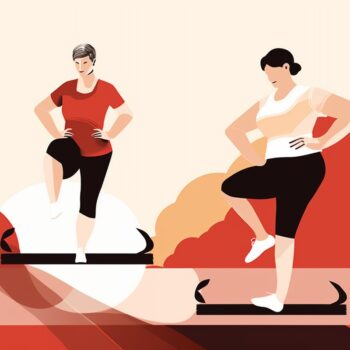 Menopause Macro Calculator
Menopause Macro Calculator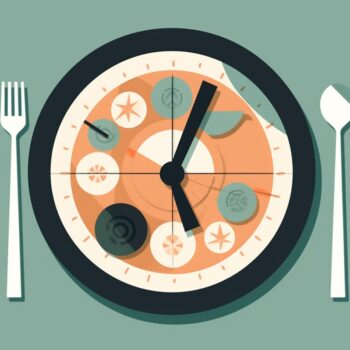 Intermittent Fasting Calculator
Intermittent Fasting Calculator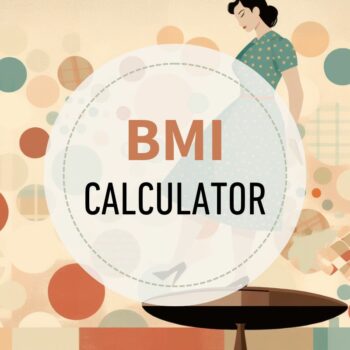 BMI Calculator
BMI Calculator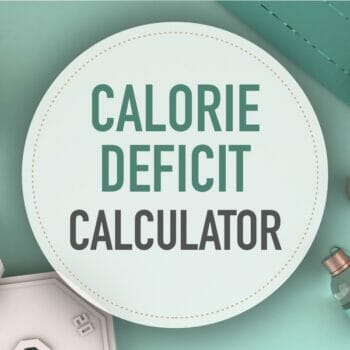 Calorie Deficit Calculator
Calorie Deficit Calculator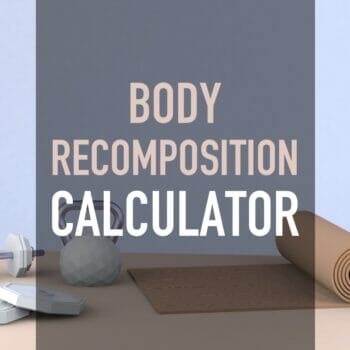 Body Recomposition Calculator
Body Recomposition Calculator
I’m interested in beginning an iifym lifestyle. I am 21 moderately active doing Crossfit 5-6 days a week for 40-60 minutes typically. I currently weigh 168 pounds. The calculator I used gave merge macros 135-protein 58-fat and 180- carbs. Is there anyone who could tell me if these seem like a solid starting point for beginning iifym? thanks in advance!
Hi Courtney, our calculator has been used by over a million people and is a great starting point. The in-depth explanation of its calculations is found here: https://healthyeater.com/how-to-calculate-your-macros all the best getting started and I hope you find this method of eating as freeing as I have.
I read the article about using your lean body mass as the base for this calculator, but that would put me at way too few calories. Since I have more than 50 lb to lose, how do I accurately calculate this?
I’m 29, 190 lb, 5’1″, and my “lean” mass is estimated at about 103 lb. (+sedentary job, workout 3x/wk
When I use 190, I get 1400 cals or 1600 on active days (that seems normal to me), and it’s around 1000 cals when I use 103 lb.
Hi Elle, it’s not always cut and dry for some and I would say your height is throwing off the lean mass calculation. Your ideal weight is about 112- 116 pounds. Plus, fat does use some calories so it can’t completely be ignored. It’s a tad complicated, I know. I would start with your true weight and see how you go. If you aren’t seeing progress, cut back a little further.
How would building a bmr work? Do you macros add once you at a desire goal? Slowly and steady are you familiar with that?
Hi Sergio, Sorry but I’m not really understanding your question. Could you clarify?
Thank you for your response I have seen some macro coaches who are eating high carbs high fats but staying with the 1g of protein per body weight and are in great shape and they have mention how it took them years to build their bmr . This guys are eating 600 700g plus carbs a day and over 100g of fats and I have made some research and apparently after your body gets use to it they start adding a few calories every two weeks or so and slowly add carbs and fats while their bmr is building. I am just confuse if that starts once you at a certain body fat percentage Etc or once you hit a plateau but seem to be a delicate process and take some time
Flexible dieting does advocate eating moderate carbs and fats but at the rates you’ve given a person would have to engage in a very strenuous exercise regimen to not get fat. 700×4 = 2800 calories from carbs plus 100×9 is 900 calories from fat plus say 185 x4 = 740 this is a total of 4,440 calories a day. This is not anywhere near realistic bmr for a fit individual. Remeber BMR is basic metabolic rate. Meaning the energy a person would burn laying in bed all day and doing no movement whatsoever. You can increase your BMR but this is by adding muscle mass.
I know online and social media can be very confusing if you have Instagram follow macroscoach and joedonellyfit. I know this guys work out very hard I was just wondering if you knew anything about that since they always talk about building their BMR and they eating extreme high calorie macro profiles
I’ve had the gastric sleeve and need to dro last 20 pound but there is no way I could eat that many calories in a day. Sure on says 800-900 calories and 60 grams protein. Do you have any experience helping people who have had surgery? Would love to know how to figure numbers for us
Hi Vivian, I’m sorry but I don’t have experience in that area. Since you’ve had a medical procedure done, you’d really have to seek the advice of your doctor or a medical professional.
Hi I have been doing crossfit since January and I have not been losing weight my fat percentage went up. I calculated my macros should I be setting it to high and very active? I do crossfit 4-5 times a week.
Hi Michelle, Crossfit can vary a lot in calorie burn and has to do with the intensity of your session. I would say for most people very active is an over-estimation of a typical calorie burn. It’s probably moderate. On non-CrossFit days you should use your sedentary macros.
thanks a mill for this clarification, that’s the piece that I couldn’t figure out – how to adjust macr workout/nonworkout days. this makes total sense now 🙂
I’m going to give this a try!!!! I’m 5’10 and weigh 135lbs. I don’t want to lose any weight.Just maintain. I run 8 miles 3 times a week and weight train 2 days. It has my macros at 300 g carbs. 65g fat and 136g protein. I think maybe I was not eating enough carbs. I lose weight very easily and was confused which direction to go…Thank you!!
Hi Lisa, glad we could help. Let us know how those macros work for you going forward.
I’m new to this whole counting macros thing and after I calculated my ratios, it just seems like my carb count is high for 20% weight loss. Many fitness blogs and nutritionists say that to lose weight eating low carb foods is the best way to go. The calculator says I need almost 240 grams and I just wanted to know which way is best for me or what works best.
The main thing you should be worrying about for losing weight is being in a caloric deficit. Different balances of macronutrients won’t really affect much. Carbs (Healthy Carbs like whole grain) promote testosterone/estrogen and give you more energy.
Hi Hannah, Carbs are not bad and don’t prevent weight loss or cause weight gain when used in context to one’s goal TDEE. This myth has been disproven time and again and is one of the core concepts of flexible dieting. Carbs fuel our workouts and our bodies. But, your carbs do seem a bit high even for flexible dieting. What are your stats and exercise level?
Hello! This has been super helpful but I have one question! I have been on my fitness journey for almost a year, first started out with losing weight and now trying to gain muscle to possibly compete in a bikini comp soon. I’ve been trying to gain muscle for a while now and have seen amazing results so far! But I need help with the food portion… I am eating very healthy but I am only hitting around 1,400 calories a day. I am 129 lbs at 5’5; I am extremely active and lift 4-5 times a week and workout everyday. My numbers from your calculator for me say 2,850 cal / 404g carbs / 130g protein / 79g fat. Does this sound about right?
Hi Madi, That’s right for our gain setting, but at those levels your gains might not be lean. Lean gains are a bit more tricky. Today, I just released the lean gains version of my Flexible Dieting eBook. Check it out as I think it will really help you for your competition. https://healthyeater.com/macro-solution
Hi Ted thanks for the help. I calculated now based on that new information u told me and it says i should have 127 carbs, 130 protein, 38 fat does that sound more accurate?
Hi Wendy, Not knowing all your stats, it seems accurate as a sedentary set of weight loss macros, but make sure that if you exercise, you adjust for that.
I was wondering if my numbers are correct im 255 lbs
carbs 124, protein 208, fat 49?
Hi Wendy, Here’s a helpful article to read to get the most accurate macros for someone with your stats. https://healthyeater.com/flexible-dieting-obese
I am overly confused with this. On the iifym website it says to do 157P, 81C, 69F. But on your website it says 126P, 161C, 42F. I filled out the same thing on both sites, what would be the correct one to follow.
I am 20 y/o, female, 196lbs, 62in tall, desk job – trying to lose weight. I can’t comprehend why they are coming in so different.
Hi Samantha, They use a different formula than we do. They have a higher fat percentage and lower carb ratio. I think ours is better because theirs is too low in carbs and is almost advocating a low carb diet which is not what flexible dieting is about. But pick whichever one you think you’ll be able to adhere to the best.
Hi Ted,
Love your site! I recently started IIFYM because of your website! I am 5’3 about 115 pounds. I am using Kayla Itsines BBG. It’s 3 days of intense body weight work outs (incorporating some small weights) and 3 days of LISS for 45 mins each session. About 1-2 days a week I will go to the gym to do some moderate/heavy lifting. All I want is to see more definition in my body and muscles and to get rid of a little bit of excess fat.
I figured out all my macros I just have a few questions.
What type of activity level should I be putting for the days I’m doing body weight exercises, LISS, and weight training?
Also on a weight training day compared to a LISS day should I be changing my protein from”normal” to “high” and vice verse or always keep it the same? As for now I have it set at normal because I don’t lift every single day. But I love protein filled foods and the calculator is only putting me at 93 g each day but I go over that so easily.
Thank you!
Hi Kendra, Thanks and so glad our site is useful. Your activity is all over the show, so it would probably be a bit more effective to use a fluid approach to tracking. It’s outlined here: https://healthyeater.com/iifym-myfitnesspal-tutorial Also, feel free to keep your protein at high. When you’re weight training, even on rest or off days your muscles are repairing and building, so the protein is essential.